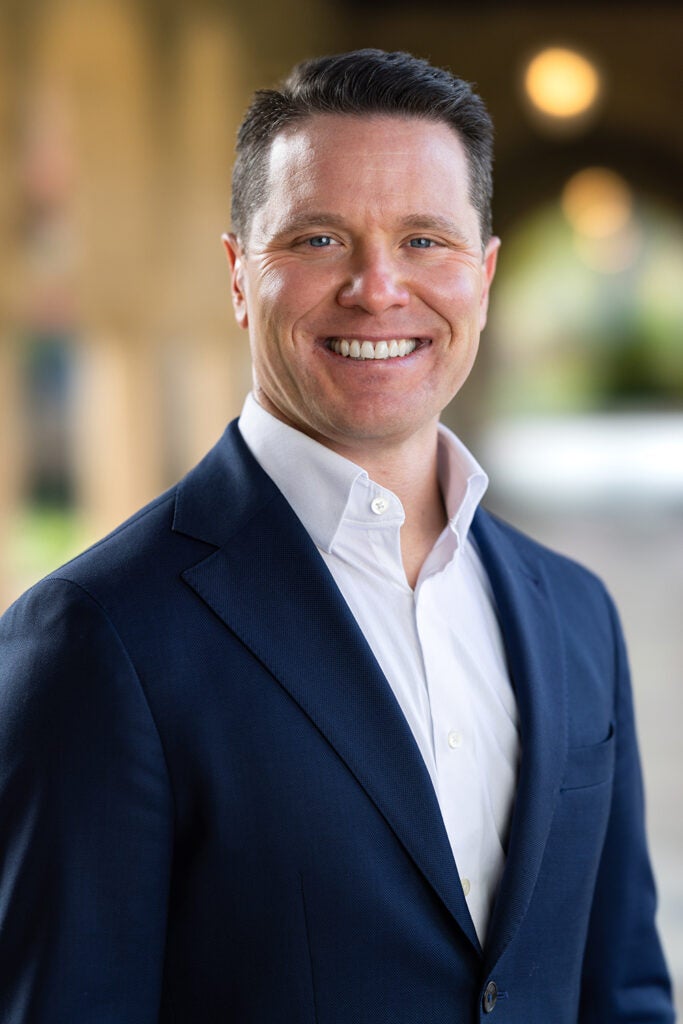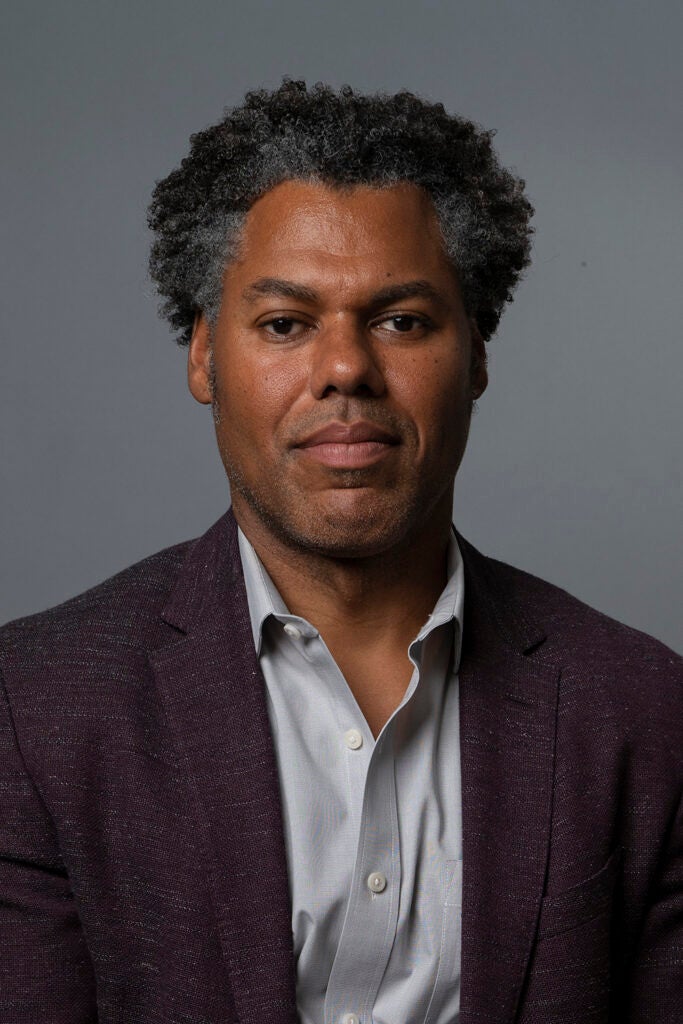Stanford’s new Institute on Race names founding faculty co-directors
Tomás Jiménez and Brian Lowery will lead the new institute dedicated to finding real-world solutions to address racial injustice.
Stanford University is launching an institute that will seek real-world solutions to racial injustice by fostering new research and partnerships, as well as leveraging existing efforts on campus, focused on race, ethnicity, and society.
The new Institute on Race – as it is unofficially being called for now – has named its founding faculty co-directors. Provost Persis Drell and Dean Debra Satz have appointed Tomás Jiménez, the Robert and Ruth Halperin University Fellow in Undergraduate Education and professor of sociology in the School of Humanities and Sciences, and Brian Lowery, the Walter Kenneth Kilpatrick Professor and professor of organizational behavior in the Graduate School of Business.
The Institute on Race will be instrumental in advancing Stanford’s IDEAL (Inclusion, Diversity, and Equity in a Learning Environment) initiative, which aims to diversify and amplify the university’s scholarship, improve campus culture, and address the larger challenges of racial injustice in the world.
The new institute joins a stellar constellation of programs, centers, and institutes at Stanford dedicated to research and teaching on race: African and African American Studies, the Center for Comparative Studies in Race and Ethnicity, the Center for Racial Justice, the Martin Luther King, Jr., Research and Education Institute, and SPARQ (Social Psychological Answers to Real-World Questions).
“Tomás and Brian have been involved in the process of developing the Institute on Race from the very start when we began to consider a new structure for the study of race and society at Stanford,” said Provost Drell. “Their deep commitment to the project is wonderful to see and gives me great confidence in the success of the new institute as it helps advance our goal of equality and justice for all as well as helps build a campus community that is welcoming to people of all identities.”
“People of color have long been denied the opportunities and resources that should be universal to everyone,” said Debra Satz, the Vernon R. and Lysbeth Warren Anderson Dean of the School of Humanities and Sciences, the Marta Sutton Weeks Professor of Ethics in Society, and professor of philosophy. “Stanford’s new Institute on Race will leverage the excellence of our Stanford faculty, and existing centers and programs, across all seven schools to address problems of racial injustice in our society and around the world. The institute’s focus on evidenced-based solutions will contribute to making a world in which racial justice is a reality, not a dream.”
Claude Steele, the Lucie Stern Professor of Psychology, Emeritus, explained that the idea for the institute grew out of the work of a task force that he co-chaired with Matt Snipp, vice provost for faculty development, diversity, and engagement, and the Burnet C. and Mildred Finley Wohlford Professor.
The task force worked with faculty and students to develop a new infrastructure at Stanford for the study of race and its effects on society. “Of course, there are multiple, truly distinguished units, programs, and centers doing this important work on campus already,” Steele said. “The Task Force agreed there would be an advantage to bringing the units that wanted to participate and benefit from more centralized resources together into an overarching institute, thereby creating important synergies between them as well as expanding the scale of their work.”
“This institute will also foster new efforts, especially those that have a solution-oriented engagement with local communities and the broader society, which is a Stanford tradition,” Steele added. “There is no other institute of this kind nationwide, and it positions Stanford to become a true leader in this area,” said Steele.
Here, Jiménez and Lowery discuss their new leadership roles and the institute.
Why did you choose to lead this new institute?
Jiménez: I am excited to be a part of the institute because it is an opportunity to have a positive influence on issues about which I care deeply. I also see leading the institute as fulfilling the responsibility we have as an institution to direct our energy and resources toward making the world more just. I speak for both Brian and me when I say that we are eager to work with our colleagues, as well as existing centers and institutes across campus, who have dedicated their scholarship and teaching to racial justice, helping Stanford become an institute of excellence in this field.
Lowery: I want to help lead the institute because it is an opportunity to expand and accelerate work that solves pressing problems that affect the ability of individuals and communities to thrive. It’s important to me because problems associated with race weaken the bonds that allow societies to serve all of its members and, in doing so, weaken the fabric of the society. This is a pivotal moment where there is enthusiastic support from the leadership of the university; energetic and talented leadership from my colleagues across the university; and a desire to make Stanford a leader in moving these issues forward.
What impact will the institute have on racial understanding and justice?
Faculty co-directors: Around the world, race is related to the health of democracy, global migration, environmental justice, and national and geo-political stability. The institute will help focus Stanford’s considerable resources on creating collaborations between faculty and organizations outside of the university to identify pragmatic interventions that address some of the most pressing problems in people’s lives. The institute will work to reduce institutional barriers to equity by engaging with governments, community organizations, and industry.
The institute will also seek to address immediate concerns such as political participation, access to medical care, education, fairness in the justice system, and employment – by affecting the behavior of practitioners, including doctors and nurses, teachers, managers, and police officers.
In addition, there will be a concerted effort to engage the humanities to help deepen our ability to see the operation of race in all our lives and society writ large, as well as to imagine possibilities for a more just world.
Ultimately, the goal of the institute is to create the conditions that allow individuals to flourish regardless of one’s racial or ethnic group and to shift the global consciousness toward a shared value of diversity that includes race and ethnicity.
How is Stanford’s institute unique from institutes at other universities doing similar work?
Faculty co-directors: Stanford’s institute is building on the important work already being done by other universities and organizations in several important ways. First, the institute is focused on solutions to the causes and effects of racism, xenophobia, and nationalism. We want to generate research that documents the problem, its causes, and its consequences. But the research that comes out of the institute will go further; it will articulate the kind of world we want to live in and drive research that shows how to get there.
A second and distinctive quality of the institute is the partnership model we will use to generate those insights. There are people, organizations, and governments across the globe working on the problems the institute will address. The people leading these efforts are expert practitioners with whom we will work as collaborators in setting the research agenda, carrying out the research, and implementing lessons learned from the findings.
Third, the institute will be an inclusive space that facilitates a greater understanding of the ways that race and ethnicity affect our lives and how we can work toward a more just world. That means that the institute will be open to a range of perspectives, evidence, and academic disciplines.
Finally, we want to build an institute that serves the community at Stanford and beyond for generations to come. Thus, the institute will facilitate the evolving research agendas of our faculty and students and the needs of the community. Justice is not an endpoint; it is a practice.
What kinds of partnerships will you draw upon from outside the university?
Faculty co-directors: We want to work with local organizations because we believe the university should be a good neighbor and partner in addressing concerns of the larger community of which we are a part. Our intention is also to work with governmental agencies at every level – municipal, state, national, and international – as well as organizations that have experience addressing these issues, including schools, community organizations, medical centers, and corporations. In sum, the institute is willing to work with any entity that shares a good faith desire to address issues of concern to the institute.
How can students get involved in the institute?
Faculty co-directors: There will be opportunities for students to participate in research, events, conferences, and public lectures. There will also be financial support for students writing solutions-focused senior honors theses and dissertations on race and ethnicity. We also hope to build an extensive set of educational programs for community members and students.
Jiménez has written extensively on how long-established populations adjust to immigration-driven change, including his most recent book, States of Belonging: Immigration Policies, Attitudes, and Inclusion (Russell Sage Foundation Press, 2021 with Deborah Schildkraut, Yuen Ho, and John Dovidio). As the director of the qualitative initiative in Stanford’s Immigration Policy Lab, Jiménez works on partnership-based policy research on citizenship, refugee resettlement, and language access and health.
Lowery studies the way members of privileged groups manage their position, such as the defense of their sense of self as deserving and the attempt to maintain their material advantages. His forthcoming book, Selfless: The Social Creation of “You” (HarperCollins, 2023), examines the way relationships define and create individuals’ sense of self and the consequences of this social construction of self on race, gender, and politics.

